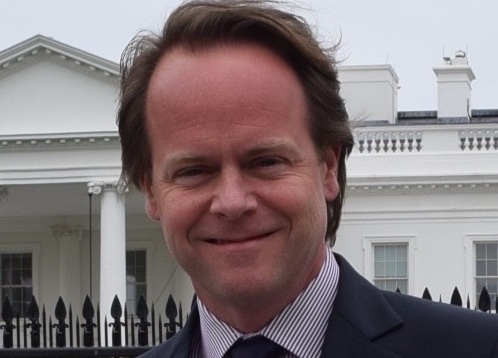
The standard press release doesn’t adequately sum up the contributions Winston Caldwell—recipient of the 2024 NAB TV Engineering Achievement Award—has made to the broadcast industry over the past several decades. His leadership on the development of the AS3A security protocol for NextGen TV is just the tip of the iceberg when summarizing his accomplishments.
Compared to previous recipients of the award, Winston—who grew up in Nashville—is a relative newbie, having begun his career in television with News Corp. in 2000, working as an engineer for its Research & Development group, known at that time as News Technology Group.
In addition to his work maximizing DTV operations for Fox stations in the transition to ATSC 1.0, he also managed engineering efforts to transition Fox stations to 3.0 and has also served as chairman of the NAB Next Generation Broadcast Platform Task Force.
But it was an incident nearly a decade ago that opened Winston’s eyes to the impending threat posed by the demand for more RF spectrum, prompted by the rapid increase of cellular technology and bandwidth demands imposed by media-hungry mobile devices.
Winston had already been working on RF issues, a subject he had taken interest in during his early years studying for his Masters while working a day job at Boeing. At Fox, he worked with the network to protect C-Band spectrum broadcasters have used for decades for network transmissions while also gaining expertise at navigating the FCC’s filing processes.
While attending a preparatory meeting for the Radio World Conference in Geneva about a decade ago, Winston—who was there representing the North American Broadcasters Association to advocate protecting C-Band spectrum—happened upon a meeting among regulators from around the world, including the U.S., and industry representatives discussing the increasing worldwide pressure to reallocate the upper portion of the TV Bands in UHF spectrum. Although some European broadcasters were present and participating in the discussions, there were no North American broadcasters.
“What became clear to me is that it wasn’t just the C-Band spectrum that was under attack,” he said. “[It was] all sorts of bands that broadcasters use, including the television bands that are used for over the air, digital terrestrial television, VHF and primarily upper band UHF.”
When he returned, his report was among the first to sound the alarm for U.S. broadcasters that their spectrum allocation could be under threat and ensuing events proved him right.
Winston’s work on the A3SA security protocols for ATSC 3.0 touches upon an often discussed aspect of the transition to NextGen TV: content protection management. Early adopters have filled internet forums with complaints about 3.0 devices not supporting an ability to record encrypted content. There are now several consumer boxes carrying the NextGen TV logo that help alleviate some of those concerns and the A3SA recently announced new specifications that assure CE companies developing new 3.0 recording devices for home networks, that such use would not be restricted for simulcasted 3.0 broadcasts.
Winston, though, is nothing if not patient, taking the long view on the transition, believing that such wrinkles will eventually be resolved.
“The reality is it’s still just early days,” he said. “You can point at the security aspects, but it’s only one item; there are fundamental aspects of the system that are still not mature yet.“
After our chat, I was impressed by how Winston was more interested in talking about his work and his colleagues than himself. It’s that kind of modesty that reminded me that it’s often the people whose diligence and persistence on the kind of work that doesn’t often get the proper acknowledgment—but often has the most impact—is the best reason why Winston is so deserving of the recognition.
Winston will receive the award on Tuesday morning, April 16 at the NAB Show in Las Vegas.







